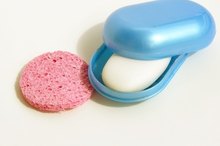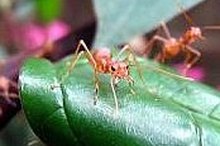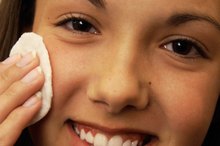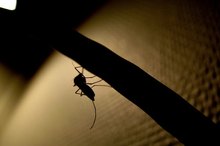How to Make Tick Bites Stop Itching
Tick bites can be painful and itchy afflictions that can cause discomfort for anyone who suffers them. Thankfully, there are some steps you can take to alleviate part of the pain associated with the bite of these little nuisances. Try learning a few of the steps you can take to ease the discomfort of a tick bite and help it heal. All it takes is a few items commonly found in most households.
If you are experiencing serious medical symptoms, seek emergency treatment immediately.
Wash the bite and surrounding area. Use a gentle antibacterial cleanser and warm water to wash the bite area at least three times a day. This will prevent infection, which can contribute to itchiness. After washing the area, apply rubbing alcohol or hydrogen peroxide to further disinfect it.
How to Stop Flea Bites from Itching
Learn More
Make a thick paste of baking soda and water and apply it to the affected area. Allow the paste to dry and then rinse it off using cold water. This method can be used every few hours to treat infection and help stop the area from itching.
Take an antihistamine, such as Benadryl, which will decrease itchiness and redness. You can find nonprescription antihistamines at most drug stores.
How to Treat an Infected Bug Bite
Learn More
In between baking soda treatments, use a cold compress, such as ice wrapped in a towel or a bag of frozen vegetables, to help reduce swelling and itch associated with a tick bite.
Warnings
If your tick bite gets infected or you develop a fever, rash, nausea, headache or vomiting, seek medical help immediately.
Save the tick and seal it in a plastic bag. In the incident that a more serious infection or disease should occur as a result of the bite, having the tick can aid in diagnosis.
Do not scratch or pick at the bite. This can cause and spread infection.
Avoid tick bites by wearing long-sleeved shirts and pants, along with close-toed shoes, in heavily wooded areas. You also can wear tick repellent.
Related Articles
References
- Health911
- Drugs.com
- Centers for Disease Control and Prevention (CDC). Lyme Disease. CDC.gov.
- Centers for Disease Control and Prevention (CDC) staff. Tick Borne Diseases of the United States. CDC.gov.
- Centers for Disease Control and Prevention (CDC) staff. Overview of Tickborne Diseases. CDC.gov.
- Johns Hopkins Medicine, Rheumatology staff. What to do After a Tick Bite. Johns Hopkinsrheumatology.org.
- Mayo Clinic staff. Patient Care and Health Info. Tick Bites: First Aid. Mayo Clinic.org.
- Ostfeld, R. (2018) 8 Facts About the Ecology of Lyme. The Cary Institute of Ecosystem Studies. Caryinstitute.org.
- Zecken de Das Infoportal. About Ticks. Zecken.de.
Warnings
- If your tick bite gets infected or you develop a fever, rash, nausea, headache or vomiting, seek medical help immediately.
- Save the tick and seal it in a plastic bag. In the incident that a more serious infection or disease should occur as a result of the bite, having the tick can aid in diagnosis.
- Do not scratch or pick at the bite. This can cause and spread infection.
- Avoid tick bites by wearing long-sleeved shirts and pants, along with close-toed shoes, in heavily wooded areas. You also can wear tick repellent.
Writer Bio
Amy Davidson is a graduate from the University of Florida in Gainesville, with a bachelor's degree in journalism. She also writes for local papers around Gainesville doing articles on local events and news.








